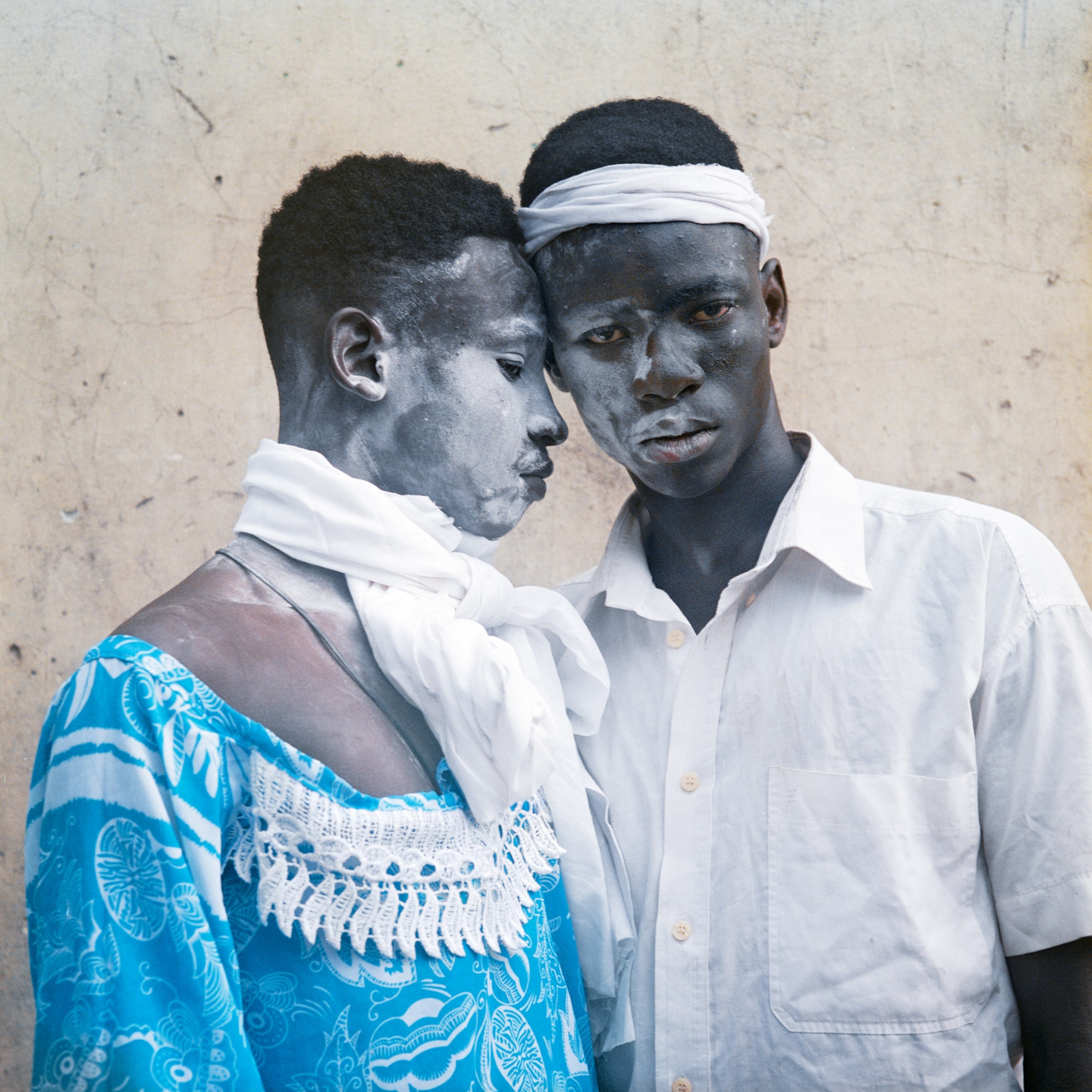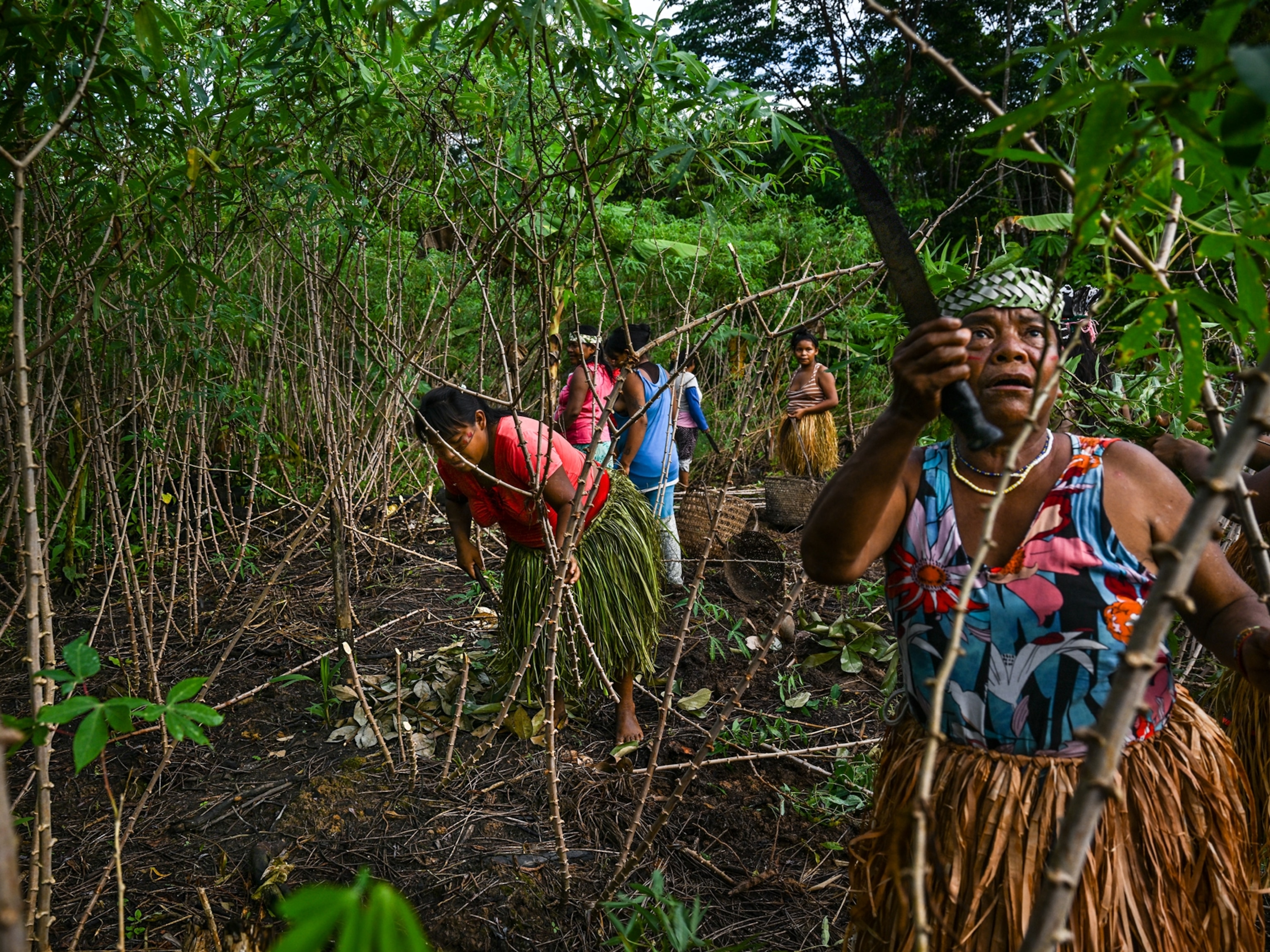Ethereal images capture the adventurous fishermen of Ghana's coast
In the rough seas off West Africa, fishing isn’t just for the brave—it’s a tradition that shapes coastal communities and their respect for nature.

Along this coast of ours, nothing is strange. If you wake early enough to meet the canoes as they come in—in Port Bouet, Côte d’Ivoire; in Ngleshi, Ghana; in Old Jeswang, the Gambia; in Grand-Popo, Benin; in Apam, Ghana—you will hear fishermen speaking Fante, Ga, Ewe, all languages of Ghana.
As the men separate into identifiable bodies in the emerging sun, pulling in the nets, their chants get louder: “Ee ba ei, ee ba ke loo—It is coming, it is laden with fish.” Each net comes in heavy with what the deep has to offer in the clutches of its mesh. The fish flop, flail, and trampoline on the sand, catching the sun’s light as quick hands sort them into wide metal basins.
The catch is never the same. Yes, there are the easily recognized commercial varieties: snapper, grouper, tuna, mackerel, kpanla (a variety of hake). But invariably there are the coveted: crayfish, eels, rays, and species of odd shapes and sizes, boned and boneless, some with features that would excite fantasy and horror writers in the manner that open-sea Phronima creatures apparently inspired the film Alien. But there will be no screaming here—there will be spices to render all species delicious.






The Ga, the people I belong to, have no fear of the unknown. The saying “Ablekuma aba kuma wo—May strangers find home with us”—is one of the foundational philosophies of our culture; it is why my European surname, Parkes, imported with a Sierra Leonean grandfather of Jamaican heritage, is considered a Ga name. It is an attitude echoed among most of the coastal peoples of West Africa: They travel without hesitation, they embrace travelers; like the waves that wash their feet, they come and go.
But in fishing families, Ghanaians are unique. In 1963, the now defunct magazine West Africa called Ghanaians “pan-African fishermen” because of the number of countries—from Nigeria to Senegal—where Fante, Ewe, and Ga fishermen applied their expertise.

Raised by some of the roughest seas along the coastline, fishermen from the Fante-speaking western and central regions of Ghana became not only the strongest sea swimmers in the world (16th- and 17th-century European travelers including Jean Barbot and Pieter van den Broecke were awed by West African swimming skills) but also expert canoers.
Even among the Ga, the most revered fishermen, the woleiatse, often are from the Abese-Fante akutso (network of families), a group of Fante naturalized as Ga people. This easy shift in identity from Fante to Ga is rooted in shared values that are tied to a quest to preserve their livelihoods. Neither group fishes at sea on Tuesdays or in freshwater on Thursdays. It is taboo, and thus a weekly break allows water spirits to replenish the fish—a conservation-minded act rooted in culture and tradition.


More tangibly, the idea of conservation guides the range of skills acquired by Ghanaian fishing communities. A large number of fishermen are part-time farmers, returning to the land once or twice annually when fish stocks are less plentiful.
The remainder mimic the migration patterns of the primary species consumed where they live, or go to areas where alternate fish can be found. Ladyfish, for example, which is taken in Senegal and the Gambia, can replace bonefish, a delicacy in the central region of Ghana.



It is also the flux of available fish that has fueled the mastery of fish brining and smoking along the coast. Good stocks of smoked fish ensure that the staple protein of coastal diets is readily available regardless of the season.
The reality of the occasional man lost at sea and the unpredictability of the catch mean that fishing families ultimately latch their dreams to the twists of fate.
Fishermen deliver their silvered bounty to the women of their towns; the women sell it and perform magic with the proceeds: trading, farming, and educating children who run along the shore, making up games while the men are away riding waves.
Even when the men don’t return, they leave something behind.

My cousin who shared my name, Ayikwei, was one of the unreturned. In 1992, when I was making my first journey to live outside the capital, Accra, in Tolon, nearly 400 miles away in northern Ghana, he said something to me that I carry always: You have no cause to be nervous. We are Ga; with the water behind us, we have nothing to fear.
Now, wherever I travel, in the midst of the strange, I close my eyes and listen for water.
This story appears in the April 2022 issue of National Geographic magazine.
Related Topics
You May Also Like
Go Further
Animals
- Fireflies are nature’s light show at this West Virginia state parkFireflies are nature’s light show at this West Virginia state park
- These are the weird reasons octopuses change shape and colorThese are the weird reasons octopuses change shape and color
- Why young scientists want you to care about 'scary' speciesWhy young scientists want you to care about 'scary' species
- What rising temperatures in the Gulf of Maine mean for wildlifeWhat rising temperatures in the Gulf of Maine mean for wildlife
- He’s called ‘omacha,’ a dolphin that transforms into a man. Why?He’s called ‘omacha,’ a dolphin that transforms into a man. Why?
Environment
- What rising temperatures in the Gulf of Maine mean for wildlifeWhat rising temperatures in the Gulf of Maine mean for wildlife
- He’s called ‘omacha,’ a dolphin that transforms into a man. Why?He’s called ‘omacha,’ a dolphin that transforms into a man. Why?
- The northernmost flower living at the top of the worldThe northernmost flower living at the top of the world
- This beautiful floating flower is wreaking havoc on NigeriaThis beautiful floating flower is wreaking havoc on Nigeria
- What the Aral Sea might teach us about life after disasterWhat the Aral Sea might teach us about life after disaster
History & Culture
- Scientists find evidence of ancient waterway beside Egypt’s pyramidsScientists find evidence of ancient waterway beside Egypt’s pyramids
- This thriving society vanished into thin air. What happened?This thriving society vanished into thin air. What happened?
Science
- Why pickleball is so good for your body and your mindWhy pickleball is so good for your body and your mind
- Extreme heat can be deadly – here’s how to know if you’re at riskExtreme heat can be deadly – here’s how to know if you’re at risk
- Why dopamine drives you to do hard things—even without a rewardWhy dopamine drives you to do hard things—even without a reward
- What will astronauts use to drive across the Moon?What will astronauts use to drive across the Moon?
- Oral contraceptives may help lower the risk of sports injuriesOral contraceptives may help lower the risk of sports injuries
- How stressed are you? Answer these 10 questions to find out.
- Science
How stressed are you? Answer these 10 questions to find out.
Travel
- A guide to Philadelphia, the US city stepping out of NYC's shadowA guide to Philadelphia, the US city stepping out of NYC's shadow
- How to make perfect pierogi, Poland's famous dumplingsHow to make perfect pierogi, Poland's famous dumplings
- The best long-distance Alpine hike you've never heard ofThe best long-distance Alpine hike you've never heard of
- Fireflies are nature’s light show at this West Virginia state parkFireflies are nature’s light show at this West Virginia state park
- How to explore the highlights of Italy's dazzling Lake ComoHow to explore the highlights of Italy's dazzling Lake Como
- Going on a cruise? Here’s how to stay healthy onboardGoing on a cruise? Here’s how to stay healthy onboard




